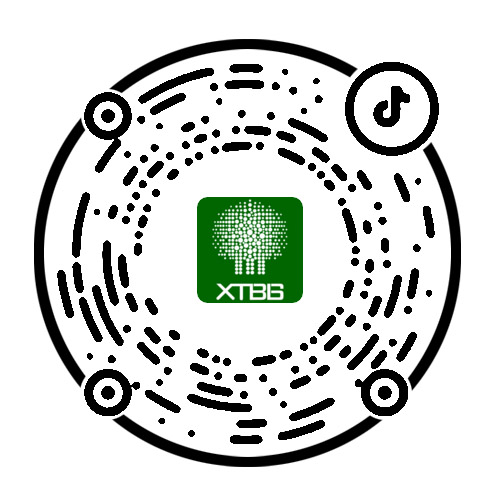研究方向:
立足于生物多样性丰富的大西南地区,致力于化学生态学和行为生态学研究,传粉昆虫的保护和利用;植物与昆虫、昆虫与昆虫的化学联系机制研究。学习经历
1979年9月至1983年7月 云南大学生物系 获生物学学士学位
1998年9月至2001年7月 云南大学生化学院 德国法兰克福大学物系 获生态学博士学位
工作经历
1983年8月至1994年12月,云南省农科院蜜蜂研究所,助理研究员
1994年12月至2001年9月,云南农业大学东方蜜蜂研究所,讲师
2001年10月至2007年10月,云南农业大学东方蜜蜂研究所,副教授
2007年11月至2017年3月,云南农业大学东方蜜蜂研究所,教授
2017年3月至今,中国科学院西双版纳热带植物园,研究员
获奖与荣誉
2011年主持的国家自然基金“中国西部地区野生中蜂形态”获得云南省自然科学三等奖。2011年获得云南省中青年学术和技术带头人后备人才及省技术创新人才称号。
代表论著
1. Shihao Dong1#, Tao Lin1#, James C. Nieh2*, Ken Tan1*(2023) .Social signal learning of the waggle dance in honey bees Science, 379,1015-1018.
2. Junjun Zhang, Zhengwei Wang, Katrina Klett, Yufeng Qu, Ken Tan (2022) Higher toxin tolerance to triptolide, a terpenoid foraged by a sympatric honeybee. Journal of Insect Physiology, 137, 104358.
3. Shihao Dong, Aili Sun, Ken Tan*, James C. Nieh* (2022) Identification of giant hornet Vespa mandarinia queen sex pheromone components. Current Biology, 32(5):R211-R212.
4. Yanan Cheng, Ping Wen; Ken Tan*, Darrouzet Eric* (2022) Designing a sex pheromone blend for attracting the yellow-legged hornet (Vespa velutina), a pest in its native and invasive ranges worldwide. Entomologia Generalis,
5. Xinxin Wen,Pianchou Gongpan, Yichuan Meng, James C.Nieh, Hongling Yu* a nd Ken Tan* (2021) Functional characterization, antimicrobial effects, and potential antibacterial mechanisms of new mastoparan peptides from hornet venom (Vespa ducalis, Vespa mandarinia, and Vespa affinis). Toxicon, 200:48-54.
6. Yichuuan Meng, Xianggui Mo, Tiantian He, Xinxin Wen, James C. Nieh* , Xinwang Yang and Ken Tan* (2021)New bioactive peptids from the venom gland of a social honet Vespa velutina. Toxicon,199:94-100.
7. Katrina Klett, Junjun Zhang, Yingying Zhang, Zhengwei Wang, Shihao Dong*, KenTan* (2021) The Nasonov gland pheromone as a potential source of death cue in Apis cerana. Journal of Insect Physiology.
8. Gaoying Gu, Yichuan Meng, Ken Tan, Shihao Dong* and James C. Nieh*(2021) Lethality of honey bee stings to heavy armored hornets. Biology, 2021, 10484.
9. Shihao Dong, Ken Tan*and James C. Nieh*(2021)Visual contagion in prey defense signals can enhance honest defense. Journal of Animal Ecology, 90(3), 594-601.
10. Zhiwen Gong, GaoyingGu, Yuan Wang, Shihao Dong, Ken Tan*, James C. Nieh*. Floral tea polyphenols can improve honey bee memory retention and olfactory sensitivity, Journal of insect physiology, doi.org/10.1016/j.jinsphys.2020.104177.
11. Zhengwei Wang*, Ken Tan* (2019) Honey bee alarm pheromone mediates communication in plant–pollinator–predator interactions. Insects, 10, 366.
12. Zhiwen Gong, Ken Tan,* and James C. Nieh* (2019)Hornets possess long-lasting olfactory memories. Journal of Experimental Biology, 222, jeb200881.
13. Yuan Li, Xingchuan Jiang, Zhengwei Wang*, Junjun Zhang, Katrina Klett, Shahid Mehmood, Yufeng Qu, and Ken Tan,* (2019) Losing the arms race: greater wax moths sense but ignore bee alarm pheromones. Insects, 10(3), 81.
14. Santiago Montero‐Mendieta,Ken Tan,Matthew J. Christmas,Anna Olsson,CarlesVilà Andreas Wallberg,Matthew T. Webster* (2019) The genomic basis of adaptation to high‐altitude habitats in the eastern honey bee (Apis cerana). Molecular Ecology, 28:746–760.
15. Shihao Dong, Ken Tan*,QiZhang, James C.Nieh*(2019)Playbacks of Asian honey bee stop signals demonstrate referential inhibitory communication. Animal Behaviour, 148:29-37.
16. Shihao Dong, Ping Wen, Qi Zhang, Yuan Wang, Yanan Cheng, Ken Tan*, James C. Nieh* (2018)Olfactory eavesdropping of predator alarm pheromone by sympatric but not allopatric prey. Animal Behaviour, 141:115-125.
17. Zhiwen Gong, Ken Tan* and James C. Nieh* (2018)First demonstration of olfactory learning and long term memory in honey bee queens. Journal of Experimental Biology, 221, jeb177303.
18. GaoChen*, Zhengwei Wang , Ping Wen,Wei Wei, Ya Chen, Hui Ai, Weibang Sun (2018) Hydrocarbons mediate seed dispersal: a new mechanism of vespicochory. New Phytologist, 220: 714–725.
19. Junjun Zhang, Zhengwei Wang*, Ping Wen, Yufeng Qu, Ken Tan* and James C. Nieh (2018) The reluctant visitor: an alkaloid in toxic nectar can reduce olfactory learning and memory in Asian honey bees. Journal of Experimental Biology, 221, jeb168344.
20. Ken Tan*, Chao Wang, Shihao Dong, Xinyu Li & James C. Nieh* (2017) The pesticide flupyradifurone impairs olfactory learning in Asian honey bees (Apis cerana) exposed as larvae or as adults. Scientific Reports 7, 17772.
21. Gao Chen*,Zhengwei Wang,Yan Qin,Weibang Sun (2017) Seed dispersal by hornets: An unusual insect-plant mutualism. Journal of IntegrativePlant Biology, 59(11):792–796.
22. Ping Wen*, Yanan Cheng,Shihao Dong, Zhengwei Wang, Ken Tan, James Nieh* (2017)The sex pheromone of a globally invasive honey bee predator, the Asian eusocial hornet, Vespa velutina. Scientific Reports, 12956.
23. Ping Wen*, Yanan Cheng, Yufeng Qu, Hongxia Zhang, Jianjun Li, Heather Bell, Ken Tan, James Nieh* (2017) Foragers of sympatric Asian honey bee species intercept competitor signals by avoiding benzyl acetate from Apiscerana alarm pheromone. Scientific Reports, 7(1), 6721.
24. Xiao-Lan Wen, Ping Wen*, Cecilia A. L. Dahlsj?, David Sillam-Dussès, Jan ?obotník (2017) Breaking the cipher: ant eavesdropping on the variational trail pheromone of its termite prey, Proceedings of the Royal Society B: Biological Sciences, 284:1853.
25. Isobel Ronai, Michael H. Allsopp, Ken Tan, Shihao Dong, Xiwen Liu, VaninaVergoz, Benjamin P. Oldroyd (2017) The dynamic association between ovariole loss and sterility in adult honeybee workers. Proceedings of the Royal Society B: Biological Sciences,284: 20162693.
26. Zhiwen Gong, Chao Wang, Shihao Dong, Xuewen Zhang, Yanhui Wang, Zongwen Hu, Ken Tan*(2017) High concentrations of the alarm pheromone component, isopentyl acetate, reduces foraging and dancing in Apis mellifera ligustica and Apiscerana cerana. Journal of Insect Behavior, 30(2):188-189.
27. R. Gloag*, Ken Tan, Yuchong Wang, Wenfei Song, WeitinLuo, G. Buchman,Madeleine Beekman,Benjamin P. Oldroyd(2017)No evidence of queen thelytoky following interspecific crosses of the honey bees Apis cerana and Apis mellifera. Insectes Sociaux,64:241–246.
28. Shihao Dong, Ping Wen, Qi Zhang, Xinyu Li, Ken Tan*& James Nieh (2017) Resisting majesty: Apis cerana, has lower antennal sensitivity and decreased attraction to queen mandibular pheromone than Apis mellifera. Scientific Reports 7: 44640.
29. Yanan Cheng, Ping Wen, Shihao Dong, Ken Tan, James C. Nieh (2017) Poison and alarm: the Asian hornet Vespa velutina uses sting venom volatiles as an alarm pheromone. Journal of Experimental Biology, 220(4): 645-651.
29. Zhiwen Gong, Chao Wang, James C. Nieh, Ken Tan* (2016) Inhibiting DNA methylation alters olfactory extinction but not acquisition learning in Apis cerana and Apis mellifera. Journal of Insect Physiology, 90:43-48.
30. Jonathan L. Teichroew* , Jianchu Xu, Antje Ahrends, Zachary Y. Huang, Ken Tan, Zhenghua Xie(2016) Is China's unparalleled and understudied bee diversity at risk? Biological Conservation.
31. Zhengwei Wang, Ping Wen, Yufeng Qu, Shihao Dong, Jianjun Li, Ken Tan* & James C. Nieh*(2016)Bees eavesdrop upon informative and persistent signal compounds in alarm pheromones. Scientific Reports 6:25693.
32. Ken Tan*, Shihao Dong, Li X, Xiwen Liu, Chao Wang, Jianjun Li & James C. Nieh* (2016) Honey bee inhibitory signaling is tuned to threat severity and can act as a colony alarm signal. PLoS Biology, 14(3): e1002423.
33. Zhengwei Wang, Yufeng Qu, Shihao Dong, Ping Wen, Jianjun Li, Ken Tan*, Randolf Menzel (2016) Honey bees modulate their olfactory learning in the presence of hornet predators and alarm component. PLoS ONE,11(2): e0150399.
34. Ken Tan*, Yufeng Qu, Zhengwei Wang, Zhiwei Liu, Michael S. Engel (2016) Haplotype diversity and genetic similarity among populations of the Eastern honey bee from Himalaya-Southwest China and Nepal (Hymenoptera: Apidae). Apidologie, 47(2):197-205.
35. Ping Wen, Jianchu Mo*, Chunwen Lu, Ken Tan, Jan ?obotník, David Sillam-Dussès (2015) Sex-pairing pheromone of Ancistrotermes dimorphus(Isoptera: Macrotermitinae). Journal of Insect Physiology, 83(1):8-14.
36. Ken Tan, Tanya Latty, Shihao Dong, Xiwen Liu, Chao Wang & Benjamin P. Oldroyd* (2015) Individual honey bee (Apis cerana) foragers adjust their fuel load to match variability in forage reward. Scientific Reports, 5:16418.
37. Ken Tan, Yuchong Wang, Shihai Dong, Xiwen Liu, Di Zhuang, Weiwen Chen, Benjamin P. Oldroyd* (2015) Associations between reproduction and work in workers of the Asian hive bee Apis cerana. Journal of Insect Physiology, 82(1):33-37.
38. Ken Tan*,Weiwen Chen, Shihao Dong, Xiwen Liu, Yuchong Wang & James C. Nieh (2015)A neonicotinoid impairs olfactory learning in Asian honey bees (Apis cerana) exposed as larvae or as adults. Scientific Reports, 5:10989.
39. Ken Tan, Xiwen Liu, Sihao Dong, Chao Wang, Benjamin P. Oldroyd* (2015) Pheromones affecting ovary activation and ovariole loss in the Asian honey bee Apis cerana. Journal of Insect Physiology, 74(1):25-29.
40. Michael J. Holmes, Ken Tan, Zhengwei Wang, Benjamin P. Oldroyd, Madeleine Beekman (2015) Genetic reincarnation of workers as queens in the Eastern honeybee Apis cerana. Heredity ,114 (1):65-68.
41. Ken Tan, Shihao Dong, Xiwen Liu,Weiweng Chen, Yuchong Wang,Benjamin P. Oldroyd , Tanya Latty* (2015) Phantom alternatives influence food preferences in the eastern honeybee Apis cerana. Journal of Animal Ecology, 84(2):509-517.
42. Jianjun Li, Zhengwei Wang, Ken Tan*, Yufeng Qu, James C. Nieh (2014) Effects of natural and synthetic alarm pheromone and individual pheromone components on foraging behavior of the giant Asian honey bee, Apis dorsata. The Journal of Experimental Biology, 217(19):3512-3518.
43. Jianjun Li, Zhengwei Wang, Ken Tan*, Yufeng Qu, James C. Nieh (2014) Giant Asian honeybees use olfactory eavesdropping to detect and avoid ant predators. Animal Behaviour, 97:69-76.
44. Michael J. Holmes, Ken Tan, Zhengwei Wang, Benjamin P. Oldroyd, Madeleine Beekman (2014)Effect of queen excluders on ovary activation in workers of the Eastern honeybee Apis cerana. Insectes Sociaux, 61(2):191-196.
45. Ken Tan*, Weiwen Chen, Shihao Dong, Xiwen Liu, Yuchong Wang, James C. Nieh (2014) Imidacloprid alters foraging and decreases bee avoidance of predators. PLoS ONE,9(7): e102725.
46. Michael J. Holmes, Ken Tan, Zhengwei Wang, Benjamin P. Oldroyd, Madeleine Beekman (2014) Why acquiesce? Worker reproductive parasitism in the Eastern honeybee (Apis cerana). Journal of Evolutionary Biology, 27(5):939-949..
47. Emily J. Remnant, Anna Koetz, Ken Tan, Eloise Hinson, Madeleine Beekman and Benjamin P. Oldroyd (2014) Reproductive interference between honeybee species in artificial sympatry. Molecular Ecology, 23(5): 1096–1107.
48. Ken Tan, Tanya Latty, Zongwen Hu, Zhengwei Wang, Shuang Yang, Weiweng Chen, Benjamin P. Oldroyd (2014) Preferences and tradeoffs in nectar temperature and nectar concentration in the Asian hive bee Apis cerana. Behavioral Ecology and Sociobiology, 68(1):13-20.
49. Zhengwei Wang, Gao Chen, Ken Tan* (2014) Both olfactory and visual cues promote the hornet Vespa velutina to locate its honeybee prey Apis cerana. Insectes Sociaux, 61(1):67-70.
50. Zhengwei Wang, Ken Tan* (2014) Comparative analysis of olfactory learning of Apis cerana and Apis mellifera. Apidologie,45(1):45-52.
51. Ken Tan*, Zongwen Hu, Weiwen Chen, Zhengwei Wang, Yuchong Wang, James C. Nieh (2013) Fearful foragers: honey bees tune colony and individual foraging to multi-predator presence and food quality. PLoS ONE, 8(9): e75841.
52. Ken Tan*, Shuang Yang, Zhengwei Wang, Menzel R (2013) Effect of flumethrin on survival and olfactory learning in honeybees. PLoS ONE 8(6): e66295.
53. Michael J. Holmes, Ken Tan, Zhengwei Wang, Benjamin P. Oldroyd, Madeleine Beekman (2013) Honeybee (Apis cerana) guards do not discriminate between robbers and reproductive parasites. Insectes Sociaux, 60(2):265-271.
54. Ken Tan, Zhengwei Wang, Weiwen Chen, Zongwen Hu, Benjamin P. Oldroyd (2013) The ‘I see you’ prey–predator signal of Apis cerana is innate. Naturwissenschaften, 100(3):245-248.
55. Ken Tan, Zhengwei Wang, Mingxian Yang, Stefan Fuchs, Linjuan Luo, Zuyun Zhang, Hua Li, Di Zhuang, Shuang Yang, Juergen Tautz, Madeleine Beekman, Benjamin P. Oldroyd (2012) Asian hive bees, Apis cerana, modulate dance communication in response to nectar toxicity and demand. Animal Behaviour, 84(6):1589-1594.













